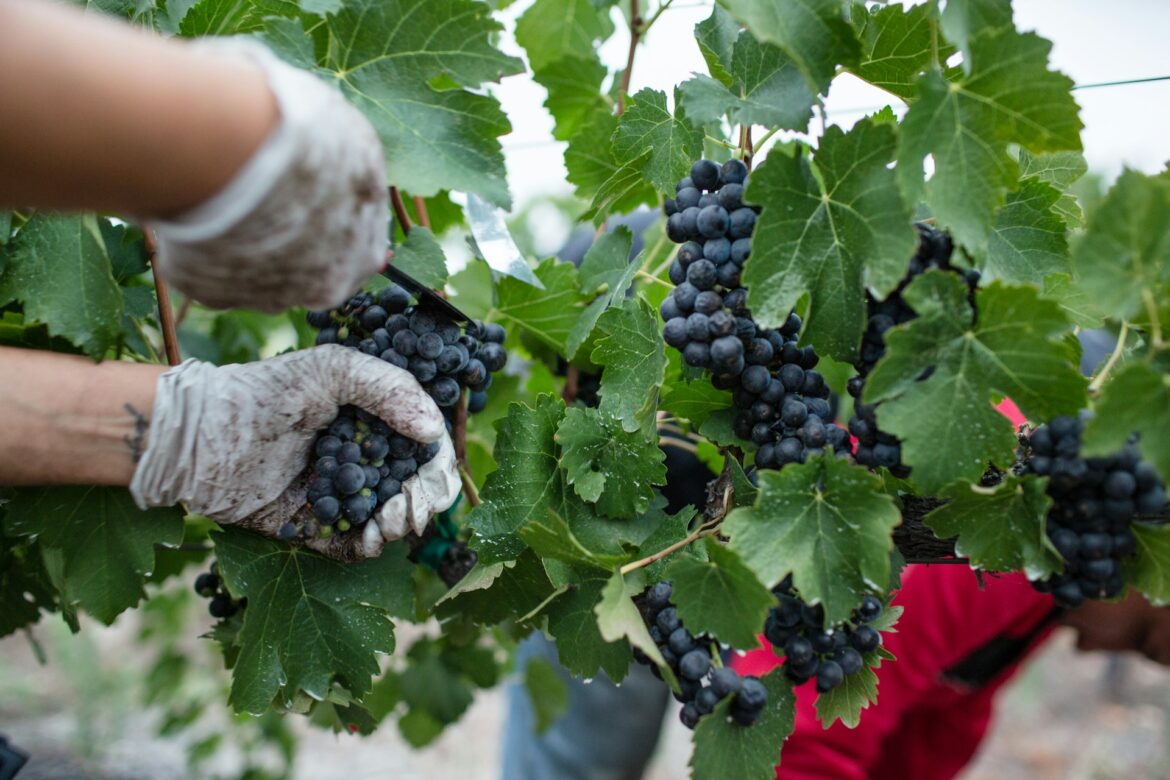The Latvian wine harvest is gaining attention across Europe. More wine lovers now turn to the Baltics for something new. Latvia’s cool climate, rich soil, and resilient grapes produce surprisingly bold wines. Traditionally, Latvians focused on beer or spirits, but that’s changing fast. Now, vineyards are blooming in regions like Sabile and Līgatne. With dedication and passion, small winemakers challenge old assumptions. Every autumn, grapes ripen under long northern sunsets. Locals and visitors gather for harvest festivals, celebrating more than just wine.
How Latvia Became a Rising Star in the Wine World
Just a decade ago, few believed Latvia could produce quality wine. Cold winters seemed too harsh. However, winemakers experimented with hardy grape varieties and advanced techniques. Eventually, success followed. Latvian vineyards now cultivate grapes like Zilga, Hasansky Sladky, and Supaga. These hybrid grapes thrive in cold climates, yet still deliver vibrant flavors. In turn, this helped shape a distinct Baltic wine identity. Today, Latvia exports wine to neighboring countries and gains international recognition. The annual Latvian wine harvest fuels this growing reputation each year.
Why Latvia’s wine industry is thriving now:
-
Innovative grape hybrids made northern winemaking possible.
-
Warmer summers improve growing conditions slightly.
-
Local passion drives experimentation and quality.
-
Baltic identity strengthens through unique wine profiles.
-
International attention grows each harvest season.
The Unique Grape Varieties Powering the Latvian Wine Harvest
Unlike Southern Europe, Latvia grows hybrid grapes that resist cold and diseases. These grapes are key to success. Zilga, for example, offers deep red color and rich berry notes. Supaga produces crisp white wine with floral aromas and lively acidity. Many vineyards also grow wild berries for blended wines. These blends reflect local traditions while offering new taste experiences. As a result, the Latvian wine harvest stands apart from other regions. Every bottle tells a story rooted in place, people, and perseverance.
Popular Latvian grape varieties and flavors:
-
Zilga – Bold reds with deep berry flavors.
-
Supaga – Light whites with floral and citrus notes.
-
Hasansky Sladky – Sweet and aromatic wines.
-
Wild berry blends – Rhubarb, blackcurrant, gooseberry.
-
Unique hybrids – Developed specifically for Baltic climates.
Vineyards Worth Visiting During Latvian Wine Harvest Season
Travelers often miss Latvia’s hidden wine regions. However, during harvest season, vineyards open their doors wide. Sabile Wine Hill is the most famous, listed in the Guinness Book of Records. Its terraced slopes produce wines with light fruit notes and fresh acidity. In Līgatne, visitors enjoy wine tastings inside old sandstone cellars. Abava Winery offers full vineyard tours, live music, and seasonal pairings. During the Latvian wine harvest, these wineries become cultural hubs. Guests pick grapes, stomp them, and enjoy freshly pressed juice.
Top vineyards to visit in Latvia:
-
Sabile Wine Hill – The world’s northernmost open-air vineyard.
-
Līgatne Wine Cellars – Tasting in ancient sandstone caves.
-
Abava Winery – Full experience with food, music, and events.
-
Krimulda Manor Vineyards – Historic setting with modern wines.
-
Tērvete Wine Estate – Family-run and focused on sustainability.
How the Latvian Wine Harvest Reflects Baltic Identity
Wine here is more than a drink—it’s a symbol of renewal. For years, Latvians fought to preserve their culture. Now, winemaking represents independence and innovation. The Latvian wine harvest brings communities together. Farmers, artists, chefs, and musicians all take part in this seasonal celebration. Even young people return from cities to help family vineyards. Through wine, they reconnect with land and tradition. Harvest festivals also feature local crafts and folk dancing. So, Latvian wine tells both old and new Baltic stories.
Cultural meaning behind the Latvian wine harvest:
-
Strengthens rural communities and traditions.
-
Encourages youth to return and participate.
-
Symbolizes cultural resilience and creativity.
-
Celebrated with music, crafts, and dancing.
-
Connects generations through shared labor and joy.
Climate Challenges and Innovation in Baltic Winemaking
Latvia faces unpredictable weather, but winemakers adapt quickly. Frost, rain, and short summers challenge grape production. However, climate change also extends growing seasons slightly. Some vineyards now grow new varietals never seen here before. Greenhouses, row covers, and eco-friendly techniques help protect vines. Farmers also experiment with soil treatments to boost grape resilience. These innovations strengthen the quality of each Latvian wine harvest. Additionally, local universities collaborate with winemakers on research and development. This blend of tradition and science powers the industry’s future.
How Latvian winemakers adapt to climate:
-
Use cold-resistant grape varieties.
-
Install greenhouses and protective covers.
-
Practice organic and regenerative farming.
-
Implement drainage to manage excess rainfall.
-
Partner with universities for agricultural research.
Wine Tourism in Latvia: A New Destination for Grape Lovers
Latvia is quietly becoming a wine tourism hotspot. Travelers seeking new experiences now add Latvia to their wine maps. While France and Italy are classics, Latvia offers something more personal. Wine tours here are immersive, guided by the winemakers themselves. Visitors help harvest grapes, sample rare wines, and enjoy rustic countryside charm. Many vineyards offer cozy guesthouses or tastings by appointment. During the Latvian wine harvest, these experiences become unforgettable. Tourists enjoy fresh air, local food, and deep cultural insight.
Why wine tourism is growing in Latvia:
-
Personalized tours with winemakers
-
Scenic vineyard views and countryside charm
-
Affordable compared to Western Europe
-
Unique grape and berry wines to taste
-
Authentic, hands-on harvest experiences
Sustainability and Eco-Friendly Practices in Latvian Winemaking
Latvian vineyards are leading the way in sustainable agriculture. Small-scale farming allows for eco-conscious decisions and innovation. Many producers use organic fertilizers and avoid chemical pesticides. Instead, they focus on soil health, biodiversity, and natural fermentation. Rainwater harvesting and solar-powered equipment are also growing trends. Some vineyards even use sheep to graze between vines for natural mowing. These efforts protect the environment and improve wine quality. The Latvian wine harvest reflects this commitment to green practices.
Sustainable methods used by Latvian winemakers:
-
Organic soil enrichment and composting
-
Avoidance of chemical pesticides and additives
-
Use of renewable energy and water-saving systems
-
Grazing animals for weed control
-
Minimal intervention winemaking techniques
Perfect Food Pairings for Latvian Wines
Pairing food with Latvian wine creates a deeper tasting experience. Local dishes often enhance the wine’s natural flavors. Light Zilga red pairs well with grilled meats or wild game. Crisp Supaga white shines with smoked fish or fresh salads. Fruit wines complement desserts like rye bread pudding or berry pies. Sparkling varieties go beautifully with creamy cheeses and appetizers. During the Latvian wine harvest, many vineyards host tasting dinners. These events showcase traditional Latvian foods and local wine pairings.
Tasty food pairings to try with Latvian wines:
-
Zilga red + venison or lamb
-
Supaga white + smoked trout or herbed cheese
-
Rhubarb wine + creamy desserts
-
Gooseberry wine + soft blue cheese
-
Sparkling wine + pickled vegetables or open sandwiches
Why the World Is Turning Its Eye to the Latvian Wine Harvest
Wine critics are noticing Latvia more each year. Magazine features, awards, and exports grow steadily. Baltic wine festivals attract international sommeliers and tourists alike. Many are surprised by the quality and complexity of the wines. Small-scale production ensures each bottle gets special attention. The Latvian wine harvest has become a seasonal highlight for wine travelers. It’s authentic, intimate, and full of surprises. Unlike crowded vineyards in France or Italy, here you connect directly with winemakers. That personal touch makes a lasting impression.
Reasons global wine lovers are drawn to Latvia:
-
Authentic, small-batch wine experiences.
-
Unique grape varieties not found elsewhere.
-
Intimate, hands-on harvest events.
-
Increasing international awards and recognition.
-
Accessible and affordable wine tourism.
Tasting Notes: What to Expect from Latvian Wines
Latvian wines carry fresh acidity and bold berry flavors. Reds often taste of wild cherries and blackcurrants. Whites show citrus, green apple, and floral aromas. Fruit wines—made from raspberries, gooseberries, or rhubarb—offer a playful, tart balance. Sparkling wines are also growing in popularity. During the Latvian wine harvest, tastings include seasonal specialties. Fresh juice, unfiltered wine, and local cheese enhance the experience. Most wines are dry or semi-dry, reflecting Nordic preferences. Every sip feels refreshing, crisp, and full of character.
Latvian wine flavors at a glance:
-
Reds: Wild cherry, currant, plum.
-
Whites: Citrus, apple, floral.
-
Fruit wines: Raspberry, rhubarb, blackcurrant.
-
Sparkling: Dry, lively, and refreshing.
-
Limited-edition seasonal blends during harvest.
Latvia is not just a wine trend; it’s a wine revolution. The Latvian wine harvest reveals the power of resilience, innovation, and community. As more vineyards take root, Latvia’s wine story grows stronger. From the hills of Sabile to the cellars of Līgatne, each bottle holds Baltic spirit. If you’re a curious wine traveler, now is the time to visit. Discover a culture reborn through vines. Join the harvest. Taste the future of northern winemaking.

